GLOBAL NEWS
10 Most Polluted Major Cities in The World
Published
8 months agoon
By
sialtech web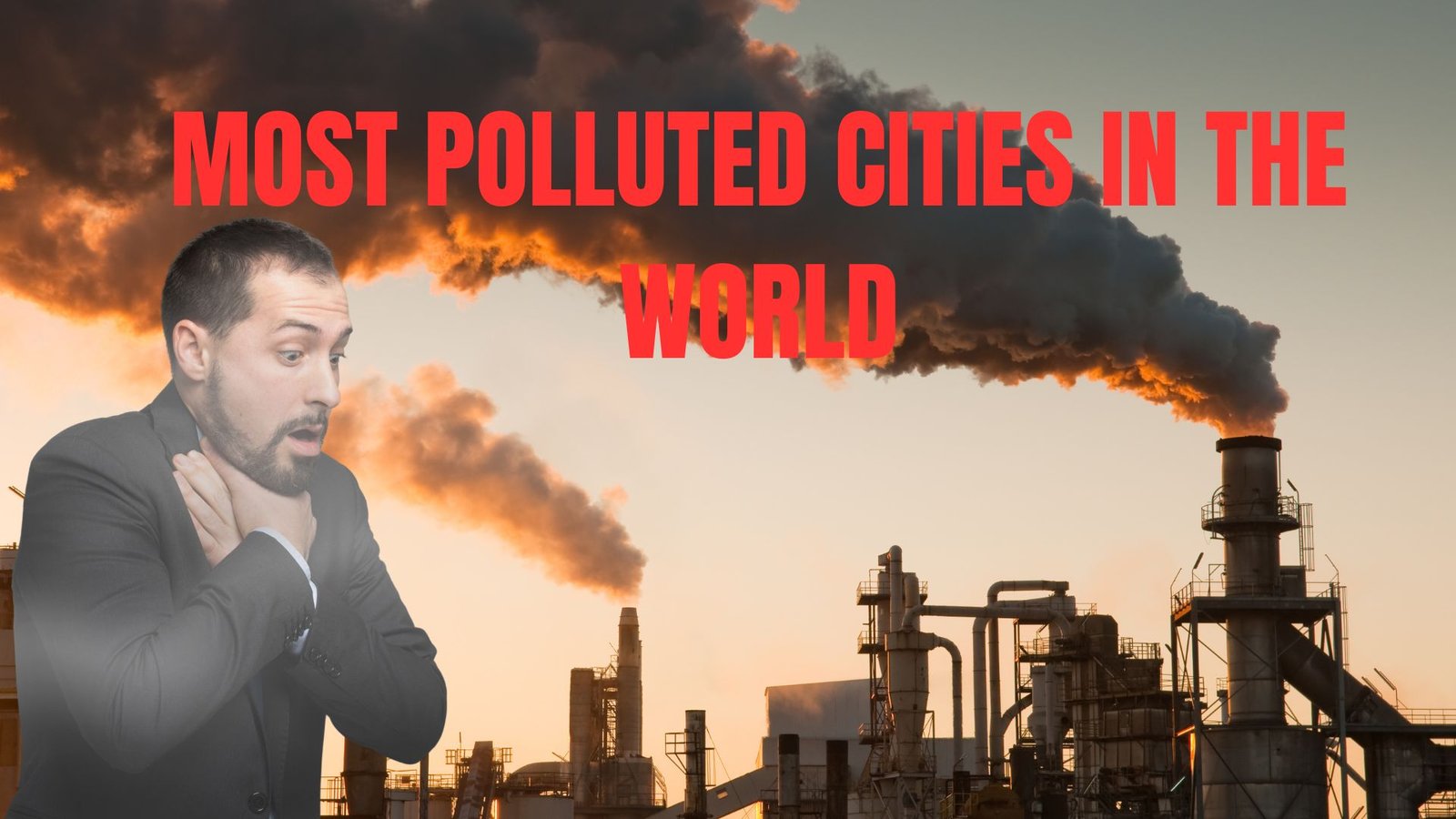
Making cities grow and become more advanced is a good thing, but it’s causing a not-so-good problem: dirty air. Many big cities are struggling with this, and it’s not good for the health of the people who live there. Let’s figure out most polluted cities in the world why they’re having such a tough time making the air clean and safe.
Why Growing Cities Struggle with Dirty Air for a Healthier Tomorrow
10. Skopje, North Macedonia - A European City Embracing Change
Skopje, the capital of North Macedonia, grapples with notable air quality concerns that impact both its residents and the local environment. The air in this European city carries the weight of various factors, requiring a comprehensive understanding to address the challenges effectively.
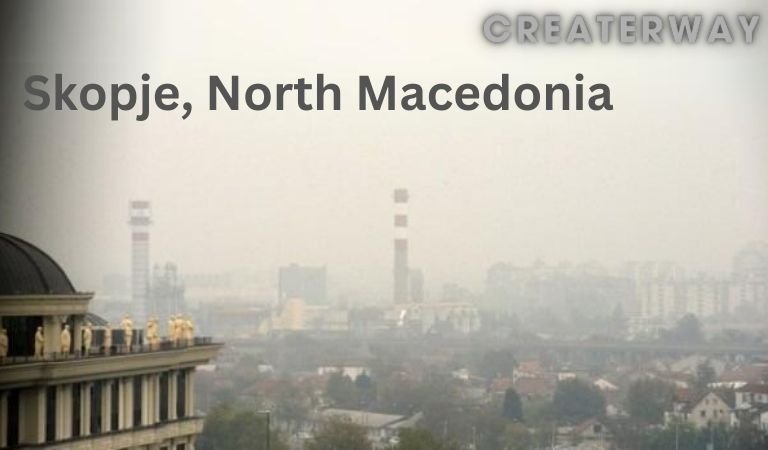
Examination of Contributing Factors:
- Industrial Emissions:
Skopje’s economic activities contribute to industrial emissions, releasing pollutants into the air. The impact of these emissions on air quality underscores the need for sustainable practices and environmental considerations.
- Wood-Burning Practices:
Wood burning, a common practice in Skopje, adds to the complexity of air quality challenges. While it’s a traditional method, the emissions from wood burning can contribute to particulate matter in the air, affecting both visibility and respiratory health.
The City’s Role in the Broader European Context:
Skopje is not just a local player but also a part of the broader European context, contributing to and benefiting from regional environmental initiatives.
- Regional Collaboration:
Engaging in collaborative efforts with neighboring European cities and nations to address shared environmental challenges. Participating in initiatives that promote sustainable practices and air quality improvement on a larger scale.
- Environmental Diplomacy:
Playing a role in environmental diplomacy by aligning with European agreements and frameworks. Contributing to discussions and actions that aim to create a cleaner and healthier environment not only for Skopje but for the entire European community.
Local Environmental Initiatives:
Skopje is actively pursuing local environmental initiatives to tackle air quality concerns and foster a sustainable future for its residents.
- Emission Reduction Strategies:
Implementing strategies to reduce industrial emissions through the adoption of cleaner technologies and practices. Encouraging businesses to prioritize environmental responsibility in their operations.
- Promoting Clean Energy:
Encouraging the transition to cleaner energy sources, reducing reliance on practices like wood burning. Promoting the use of sustainable and eco-friendly alternatives to improve air quality.
- Community Involvement:
Engaging the local community in environmental initiatives. Raising awareness about the impact of individual actions on air quality and encouraging sustainable practices at the individual and community levels.
9. Jakarta, Indonesia - Navigating the Urban Nexus
Jakarta, the vibrant capital of Indonesia, faces significant challenges in maintaining air quality amid rapid urbanization. The air in this bustling metropolis carries the weight of various factors, impacting both the environment and the health of its residents.

Discussion on Pollution Sources:
- Industrial Activities:
Jakarta’s economic growth is intertwined with industrial development. However, the emissions from these industries contribute to air pollution, releasing pollutants that affect the overall air quality in the city.
- Traffic Congestion:
The streets of Jakarta experience severe congestion, with a high volume of vehicles emitting exhaust fumes. The dense traffic adds to the complexity of the city’s air quality challenges, posing significant hurdles for environmental sustainability.
Sustainable Solutions and Urban Planning:
Jakarta recognizes the need for sustainable solutions and strategic urban planning to address air quality challenges and improve the well-being of its residents.
- Green Infrastructure:
Introducing green infrastructure within the city, such as vertical gardens and green rooftops, to absorb pollutants and enhance air quality. These initiatives contribute to Jakarta’s commitment to balancing development with environmental preservation.
- Public Transportation Development:
Investing in and expanding public transportation networks to reduce reliance on individual vehicles. This initiative aims to decrease vehicular emissions, offering residents sustainable and efficient transportation alternatives.
- Emission Control Measures:
Implementing strict measures to control emissions from industrial activities. Jakarta’s commitment to enforcing regulations ensures that industries adhere to environmentally responsible practices, minimizing their impact on air quality.
- Urban Planning for Livability:
Implementing urban planning strategies focused on creating livable spaces. This includes designing walkable neighborhoods, prioritizing green spaces, and promoting mixed land-use planning to enhance the overall quality of life in the city.
8.Riyadh, Saudi Arabia - Pursuing Sustainable Progress
Riyadh, the capital of Saudi Arabia, confronts substantial challenges in preserving air quality while striving for progress. The air in this bustling city carries the weight of various factors, influencing both the environment and the health of its residents.

Examination of Pollution Sources:
- Industrial Emissions:
Riyadh’s economic growth is closely tied to industrial development. However, the emissions from industries contribute to air pollution, releasing pollutants that impact the overall air quality in the city.
- Vehicular Traffic:
Riyadh’s roads witness heavy traffic, with a significant number of vehicles emitting exhaust fumes. The high volume of vehicular emissions adds complexity to the city’s air quality concerns, posing challenges to environmental sustainability.
Sustainable Initiatives and Urban Planning:
Riyadh is committed to fostering sustainable progress and has implemented various initiatives and urban planning strategies to ensure cleaner air for its residents.
- Green Spaces and Parks:
Introducing green spaces and parks within the city to absorb pollutants and enhance air quality. These areas contribute to Riyadh’s commitment to balancing development with environmental preservation.
- Public Transportation Systems:
Investing in public transportation infrastructure to reduce reliance on individual vehicles. This initiative aims to decrease vehicular emissions, providing residents with sustainable and eco-friendly transportation alternatives.
- Strict Emission Standards:
Enforcing stringent emission standards for industries and vehicles to control pollution. Riyadh’s commitment to implementing and updating regulations ensures that businesses and transport systems adhere to environmentally responsible practices.
- Urban Planning for Sustainability:
Implementing urban planning strategies that prioritize sustainability. This includes designing energy-efficient buildings, incorporating green architecture, and creating pedestrian-friendly zones to reduce the ecological footprint of the city.
7. Kuwait City, Kuwait - Striking a Balance Between Growth and Environment
Kuwait City, a bustling hub in Kuwait, faces notable challenges in maintaining air quality as it undergoes rapid growth. The air in this dynamic city carries the impact of various factors, influencing both the environment and the well-being of its residents.

Exploration of Contributing Factors:
- Industrial Activities:
Kuwait City’s economic growth is closely linked to industrial development. However, the emissions from these industries contribute to air pollution, releasing pollutants that affect the overall air quality in the city.
- Vehicular Emissions:
The city’s roads witness heavy traffic, with a high volume of vehicles emitting exhaust fumes. Vehicular emissions significantly add to the air quality concerns, posing challenges for environmental preservation.
- Dust Storms:
Kuwait, being located in a desert region, is susceptible to dust storms. These natural events contribute to the particulate matter in the air, impacting visibility and adding an extra layer of complexity to the city’s air quality challenges.
Efforts to Balance Growth with Environmental Preservation:
Kuwait City recognizes the need to harmonize economic growth with environmental preservation and has initiated various efforts to strike this delicate balance.
- Green Spaces and Urban Planning:
Introducing green spaces within the city to counteract the effects of industrial and vehicular pollution. Sustainable urban planning initiatives aim to create a more environmentally friendly cityscape.
- Environmental Regulations:
Enforcing stringent regulations on industrial emissions and vehicular standards to control pollution. Implementing policies that ensure businesses align with environmentally responsible practices.
- Dust Storm Mitigation:
Implementing measures to mitigate the impact of dust storms, including improved infrastructure and early warning systems. These initiatives aim to reduce the contribution of natural factors to air pollution.
- Public Awareness and Education:
Engaging the public in environmental awareness campaigns to foster a sense of responsibility. Encouraging practices such as reduced energy consumption and responsible waste disposal to involve the community in the efforts for a cleaner environment.
6. Wuhan, China - Embracing Change for Cleaner Air
Wuhan, a city in China undergoing significant development, grapples with both the opportunities and challenges that come with progress. As the city transforms, it faces environmental hurdles that demand attention to secure a sustainable future for its residents.

Examination of Sources of Air Pollution:
- Industrial Factors:
Wuhan’s development is closely tied to industrial growth. The emissions from factories contribute to air pollution, releasing pollutants that affect the overall air quality in the city.
- Urban Factors:
The urban landscape of Wuhan also plays a role in air quality challenges. Urbanization can lead to increased vehicular traffic, construction activities, and energy consumption, all of which contribute to the city’s environmental footprint.
Strategies for Transitioning to Cleaner Air:
Wuhan recognizes the need for change and is actively pursuing strategies to transition to cleaner air.
- Green Initiatives:
Introducing green spaces within the city to absorb pollutants and improve air quality. This includes creating parks, gardens, and tree-lined avenues to counteract the effects of industrial and urban pollution.
- Industrial Upgrades:
Implementing technology upgrades in industries to reduce emissions. This involves adopting cleaner and more sustainable practices to minimize the environmental impact of industrial activities.
- Public Transport and Sustainable Urban Planning:
Promoting the use of public transportation to reduce reliance on individual vehicles, thereby decreasing vehicular emissions. Integrating sustainable urban planning practices to create a more eco-friendly cityscape.
- Environmental Policies:
Enforcing and introducing policies that prioritize environmental conservation. This includes regulations on industrial emissions, waste management, and energy consumption to steer Wuhan towards a more sustainable path.
5. Mumbai, India - Balancing Progress and Environmental Impact
Mumbai, a bustling metropolis in India, grapples with significant air quality challenges that accompany its progress and growth. The air in this vibrant city carries the traces of various factors, impacting both the environment and the health of its residents.
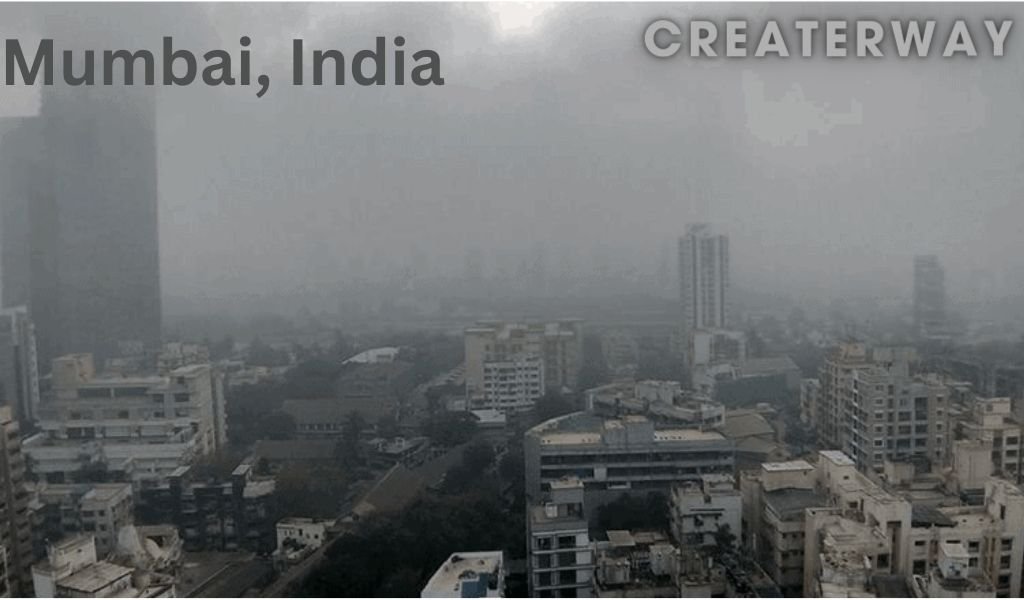
Exploration of Contributing Factors:
- Industrialization:
Mumbai, as an economic hub, experiences the consequences of rapid industrialization. The emissions from factories release pollutants into the air, contributing to the overall air quality concerns in the city.
- Vehicular Emissions:
The crowded streets of Mumbai are filled with a diverse array of vehicles, each contributing to air pollution. Vehicular emissions, including exhaust fumes, play a significant role in degrading the air quality in the city.
- Waste Management Challenges:
The management of waste poses a unique challenge in Mumbai. Improper disposal and treatment of waste can lead to the release of harmful substances into the air, adding to the city’s environmental burden.
Balancing Economic Development and Environmental Sustainability:
Mumbai faces the delicate task of maintaining a balance between economic progress and the preservation of the environment.
- Strategic Urban Planning:
Implementing sustainable urban planning to accommodate economic growth without compromising environmental integrity. This includes designing green spaces, regulating industrial zones, and creating eco-friendly infrastructure.
- Technological Solutions:
Embracing innovative technologies for waste management and industrial processes to reduce emissions. Technological advancements can play a crucial role in minimizing the environmental impact of economic activities.
- Community Engagement:
Encouraging community involvement in environmental initiatives. This involves fostering a sense of responsibility among residents and businesses to adopt practices that contribute to cleaner air.
4. Karachi, Pakistan - Navigating Urbanization's Impact on Air Quality
Karachi, a vibrant city in Pakistan, is in the midst of a struggle with air pollution. This isn’t just a minor inconvenience; it’s a significant challenge that stems from various sources. Let’s take a closer look at why Karachi is facing air quality issues and what factors contribute to this ongoing struggle.
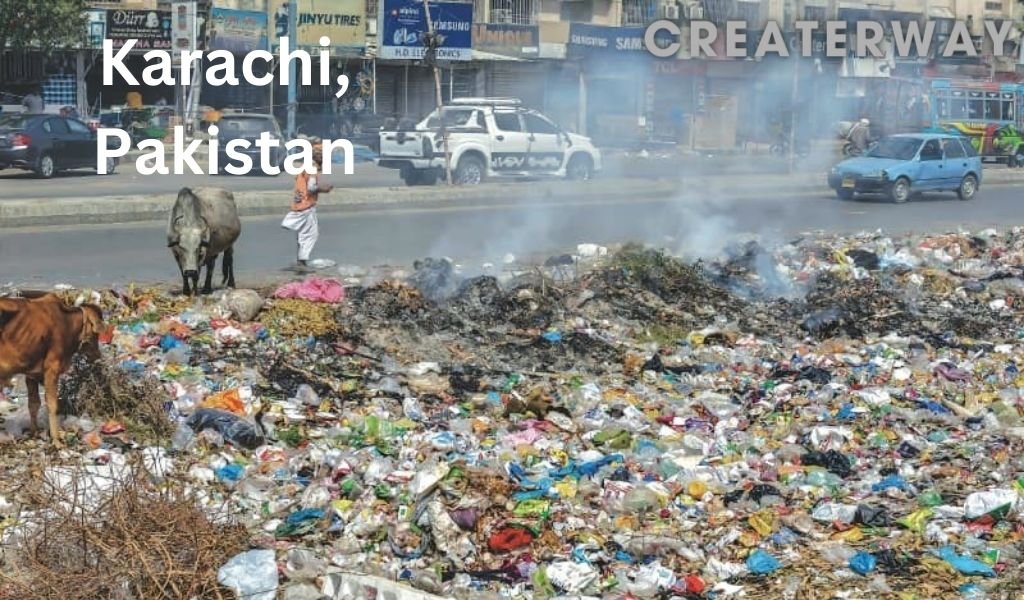
Effects of Rapid Urbanization:
- Population Growth and Construction:
A growing population and ongoing construction projects characterize Karachi’s rapid urbanization. The increase in buildings and infrastructure contributes to environmental challenges, including air pollution.
- Industrial Emissions:
As industries thrive in Karachi, so does the release of pollutants into the air. Industrial emissions play a substantial role in the city’s air quality concerns, impacting both the environment and the health of its residents.
- Vehicular Traffic:
The streets of Karachi are bustling with vehicular traffic. The sheer volume of vehicles, each emitting exhaust fumes, adds to the complexity of the city’s air quality challenges.
Efforts and Initiatives to Improve Air Quality:
Addressing air quality issues in Karachi involves proactive efforts and initiatives aimed at creating a healthier environment for its residents.
- Regulations and Policies:
Implementation of regulations and policies to control industrial emissions and vehicular pollution, ensuring that businesses and transport systems adhere to environmental standards.
- Public Awareness Campaigns:
Raising awareness among the public about the impact of individual actions on air quality. Encouraging practices such as carpooling, using public transport, and reducing industrial waste.
- Green Spaces and Urban Planning:
Introducing green spaces and integrating sustainable urban planning to counterbalance the effects of rapid urbanization. Planting trees and creating green zones can help absorb pollutants and enhance air quality.
3. Baghdad, Iraq - Addressing Environmental Concerns
Baghdad, the capital of Iraq, grapples with significant environmental challenges. These challenges extend beyond what meets the eye, impacting the city’s surroundings and the well-being of its residents. Let’s explore the environmental landscape of Baghdad and understand the hurdles it faces.

Sources of Air Pollution:
- Industrial Emissions:
Like many urban centers, Baghdad hosts various industries contributing to air pollution. Emissions from factories release pollutants into the air, adding to the city’s environmental burden.
- Traffic Exhaust:
The bustling streets of Baghdad witness heavy traffic, with vehicles emitting exhaust fumes. This vehicular activity significantly contributes to the overall air quality concerns in the city.
Impact on Health and Well-being:
Air pollution in Baghdad isn’t just a matter of aesthetics; it directly affects the health and well-being of its residents.
- Respiratory Health Issues:
Inhaling polluted air can lead to respiratory problems, affecting the lungs and overall health. Residents may experience difficulties breathing and an increased risk of respiratory diseases.
- General Well-being:
Beyond physical health, the pervasive pollution in Baghdad can impact the general well-being of its residents, influencing their daily lives and activities.
2. Lahore, Pakistan - Navigating the Smog Challenge
Lahore, a bustling city in Pakistan, is facing a considerable challenge – smog. This isn’t just about fog mixed with smoke; it’s a persistent issue that affects the daily lives of Lahore’s residents. Let’s delve into why Lahore is grappling with smog and what factors contribute to this ongoing battle.
Prevalence of Smog:
Smog isn’t just an occasional inconvenience in Lahore; it’s a regular occurrence. This thick haze hangs in the air, making visibility low and the air quality poor. Understanding why smog is so prevalent helps shed light on the city’s air quality struggles.
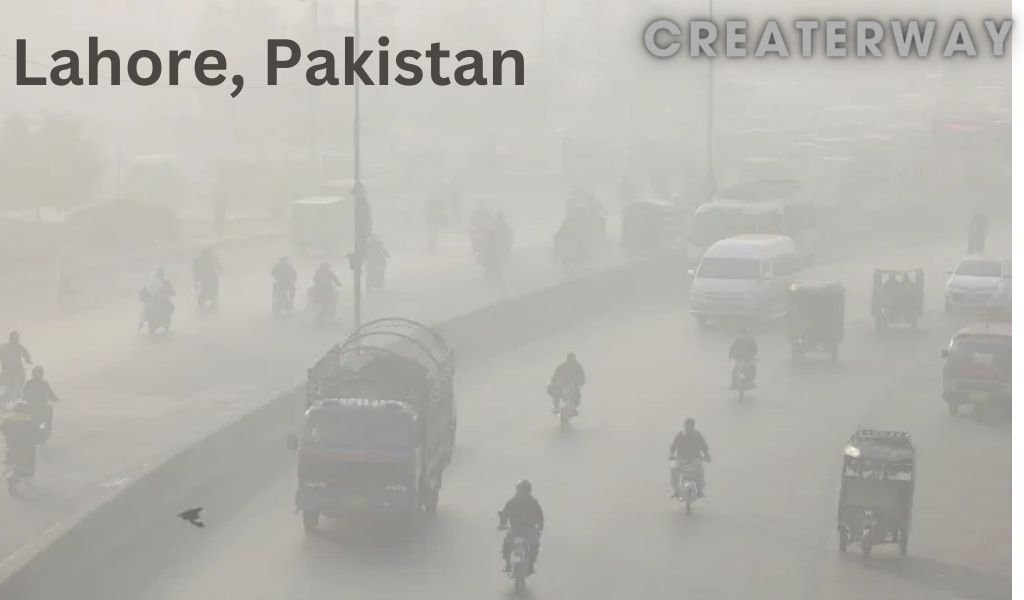
Contributing Factors:
- Industrial Activities:
Lahore is home to various industries, each contributing its share to the smog problem. The emissions from factories release pollutants into the air, creating a hazy atmosphere that blankets the city.
- Vehicular Traffic:
The city’s streets are bustling with vehicles, each adding to the smoggy mix. Exhaust fumes from cars, buses, and other modes of transport release pollutants that contribute to the overall air quality challenge.
Examination of Causes:
Smog in Lahore isn’t a random occurrence; it has clear causes rooted in the city’s industrial and transportation landscape. Understanding these causes is crucial to finding effective solutions and improving the air quality of Lahore’s residents.
1. Delhi, India - The Everlasting Struggle
Delhi, the heart of India, has been facing a long-standing battle with air pollution. This isn’t a new problem; it’s been around for a while. The air quality in Delhi has given its residents quite a challenge, affecting their daily lives and well-being.

Factors Contributing to High Pollution Levels:
- Industrial Emissions:
Delhi is a bustling city with many industries. These industries release things into the air that aren’t good for us, like tiny particles and gases. When there are too many of these things in the air, it becomes polluted.
- Crop Burning:
In the nearby areas, farmers often burn leftover crops after harvest. This releases smoke into the air, and when the wind brings it to Delhi, it adds to the pollution. This happens more during certain times of the year.
- Vehicular Exhaust:
Delhi has a lot of vehicles – cars, buses, and more. These vehicles produce exhaust fumes that contain pollutants. With so many vehicles on the road, the air can get filled with these pollutants, making it harder to breathe.
Impact on Public Health and Environment:
- Health Issues:
Breathing in polluted air can lead to health problems. It’s not just a matter of feeling uncomfortable; it can cause serious issues like respiratory diseases, especially for children and older people.
- Environmental Impact:
The environment also takes a hit. Plants and animals can suffer, and even buildings and monuments can be affected by the pollutants in the air.
Also visit this BLISSFULWELLNESSQUEST.
As our cities evolve, let’s not just build skylines; let’s create a breath of fresh air. In the dance between progress and nature’s harmony, let’s craft a future where every city breathes clean and the rhythm of urban life sings the song of sustainability.

